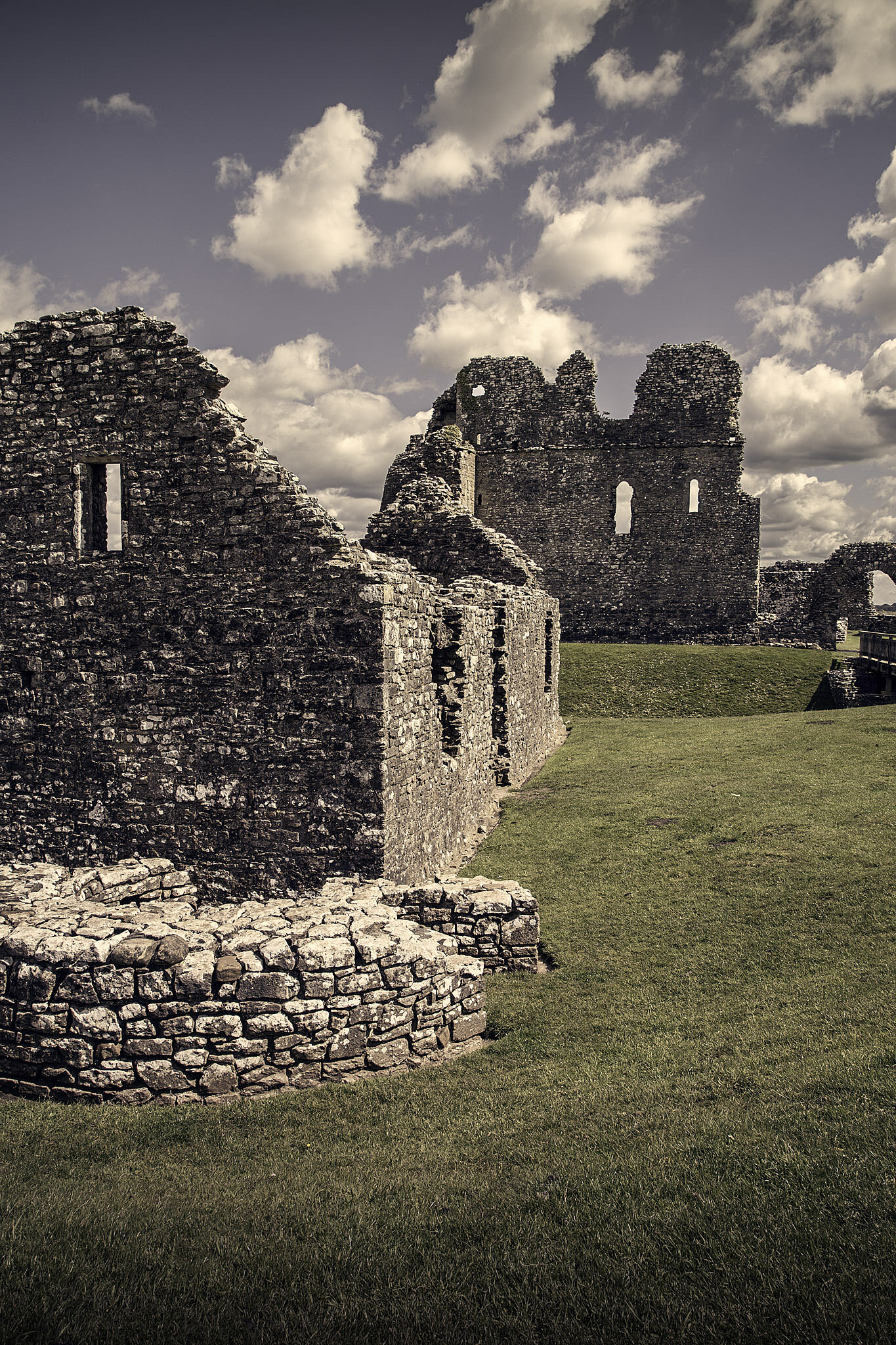Ogmore Castle, Wales



Soon after the Norman Conquest of 1066, King William I did not directly engage in the conquering of Wales. However, the Normans did advance into Wales, and began building castles to control the region. King William I left Wales to his new Marcher Lords. William de Londres had come over with William the Conqueror from Normandy, and he was one of the men who followed Robert Fitzhamon into the then Welsh kingdom of Morgannwg, in 1089, the area now known as Glamorgan. It was here that he began the first castle at Ogmore. This was an earth embankment, topped by a wooden palisade, to surround the buildings inside it. This early wooden castle would soon be replaced in stone. In Glamorgan, the early castles were usually circular ringworks, at Ogmore there are two ringworks which are today represented by the inner and outer wards.
The land ‘given’ to William de Londres by the Conqueror, and in turn Robert Fitzhamon, was not theirs to give. The area of Glamorgan was already occupied by the Welsh, who were not happy to have lost control of it to the Normans. In the late 11th Century, Wales was not a single political entity, but instead comprised of a series of independent Kingdoms. William the Conqueror gave the lands along the border of Wales to loyal men, who had come over with him from Normandy. These new 'marcher lords' he created, were encouraged to seize land and build castles, to secure their advance into Wales. The castle at Ogmore is thought to have begun building work in 1106, but by 1116 the castle was under attack by the Welsh, and de Londres fled. However, his butler is said to have remained and succeeded in defending the castle. For his efforts he was Knighted by de Londres, and became Sir Arnold Butler, he was also given the Manor of Dunraven as reward. At this time the castle sat on the front line, between the Normans and the Welsh territory. Soon after the attack of 1116, the keep was rebuilt in stone for greater protection, and it was one of the first castles in Wales to be built in stone. The Normans soon pushed farther westwards into Wales, and by 1150, Ogmore was no longer the front line.
The River Ogmore was a natural barrier between the Welsh and the Normans in the 11th Century. Ogmore Castle is situated right on the river, and would have controlled the region. William de Londres was one of only twelve Knights, who became known as the Twelve Knights of Glamorgan, who had accompanied Robert Fitzhamon on his campaign into South Wales. As the Norman’s continued to expand through the Vale of Glamorgan, the importance of the castle at Ogmore began to decline. By the time Edward I conquered Wales, in the late 13th Century, the castle's military role had come to an end, although it continued to be used.
These early Welsh castles were used in the very first stages of the colonization of Wales. They were first and foremost fortresses, built to secure the land they stood upon. They were the bases for the Lords who later became the gentry, and from them they would defend, exploit and administer their new territories. They were built along the lines of existing communication, and at strategic positions to not only control the region, but to be able to travel and communicate easily with other regions.
In the 11th Century, the Lordship of Ogmore, was one of the more prosperous marcher areas, but it was also divided into two parts. The part located in the north remained strongly Welsh in character, whereas the lowland settlement, which contained the more fertile lands, became more Anglo-Norman in nature, and this included the area of Ogmore. The English tenure system was also introduced, where the ownership of the land was vested in the Lord of Ogmore and his immediate followers. It is likely that those who farmed the land initially were Welsh, this was a feudal system, where in return for their position, the Lords of Ogmore owed feudal duties to their overlord. This included the service of four Knights to Cardiff Castle.
The castle remained in the Londres family until 1298, when their descendant, Maud de Chaworth, married Henry of Lancaster. The Lordship of Ogmore was now in the hands of the Dukes of Lancaster, and when Henry of Bolingbroke became Henry IV, King of England, in 1399, it became a Royal residence. Unfortunately, this did not help it to survive, as the remote location slowly fell into decline, although it was still a residence until the 16th Century, and it continued further as the local Court House until 1803.
Today, a bridge divides the castle’s inner and outer wards. Inside the inner war are the foundations of several buildings, with the largest remaining block being the keep. It is one of the oldest stone keeps in Wales. The footings of the original drawbridge are also visible. Additional buildings would have also once filled the outer ward.




